Luria isabella (Linnaeus, 1758)
Isabella
cowry, 15-42mm
Luria isabella is common
in a wide range of habitats throughout the atoll, including intertidal reefs,
shallow subtidal reefs, lagoon pinnacles, and on the seaward slope as deep as
at least 25m. Living animals are usually found under rocks, and tend to keep
the smooth, black mantle fully extended and covering the shell. They are also
often found in seaward reef and lagoon pinnacle ledges at night. Some smaller,
pale shells have been considered a variety called gilvella. This species
is found throughout the Indo-Pacific.
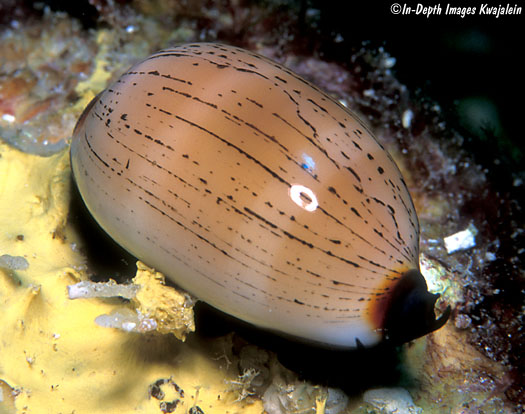
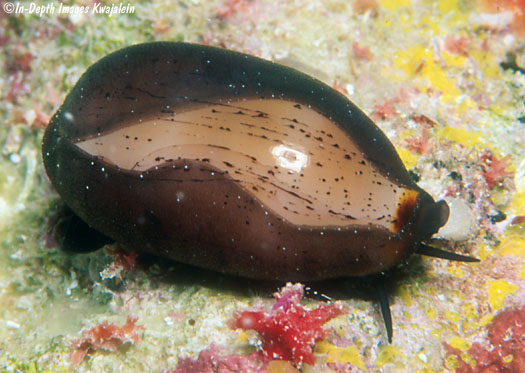
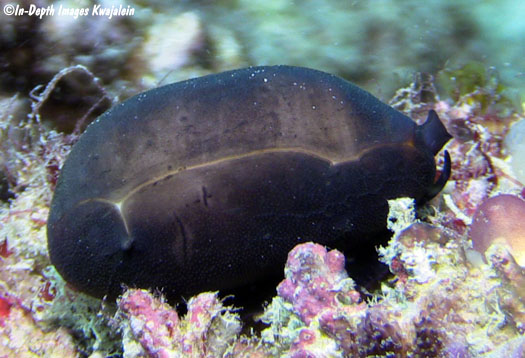
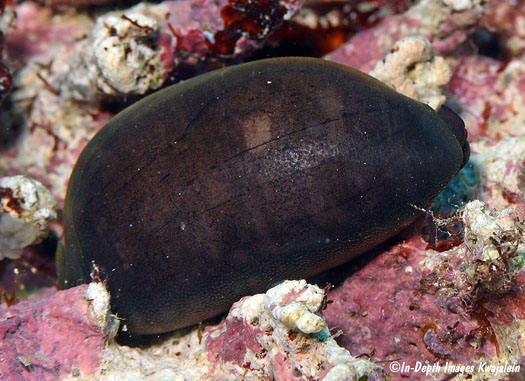
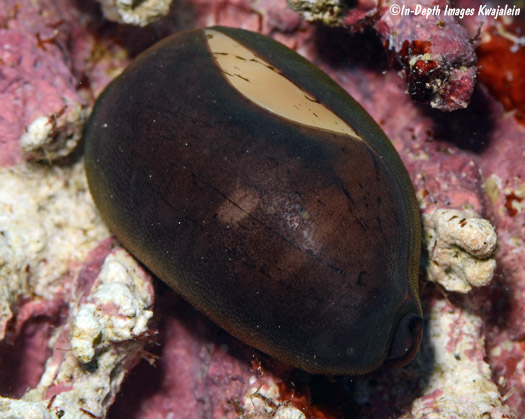
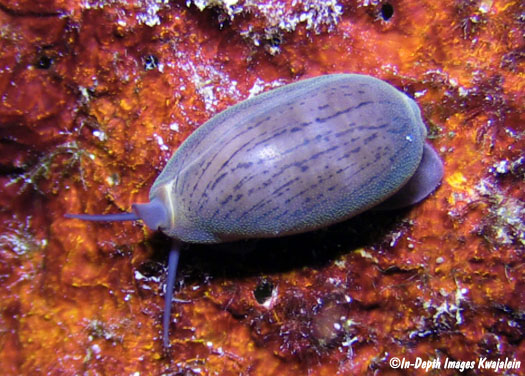
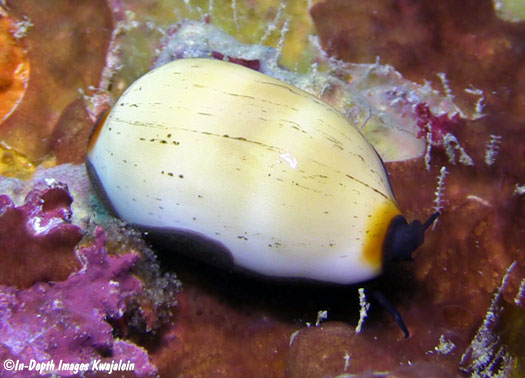
This large specimen found on sponges
shows the nearly opaque black mantle completely covering the shell.
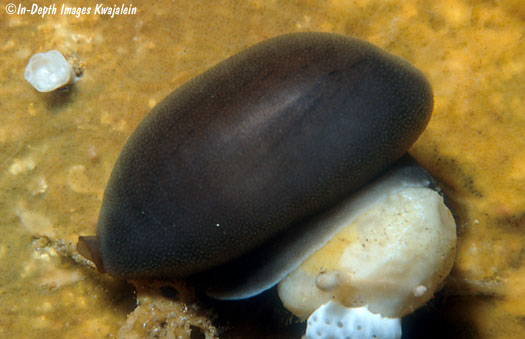
Typically, this is how cowries
brood their eggs, expanding their foot to cover as much of the mass as possible.
This is done primarily to protect the developing eggs from a wide variety of
potential egg eaters. It is likely that the female cowry stays in this position
and does not even leave it to eat until the eggs hatch.
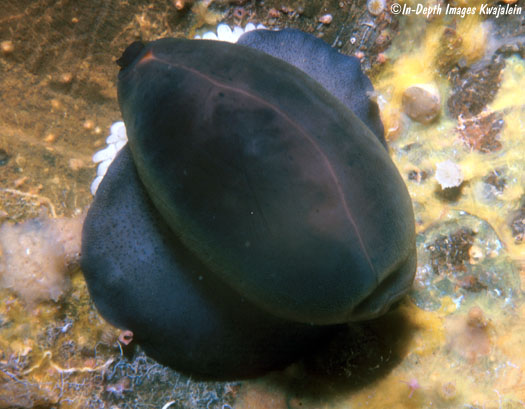
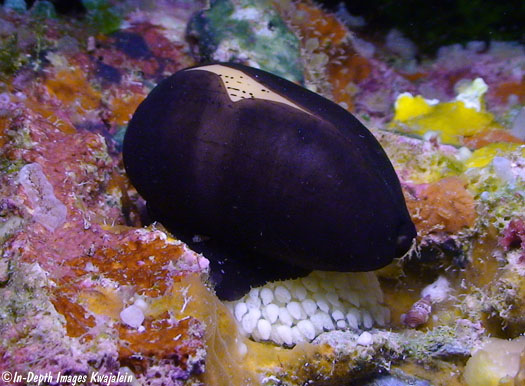
Here the animal has been distracted
by the camera's light and has pulled away from the egg mass. Hopefully it covered
it again when the distraction went away.
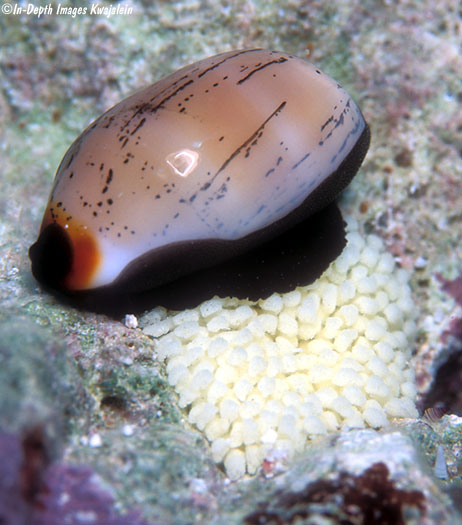
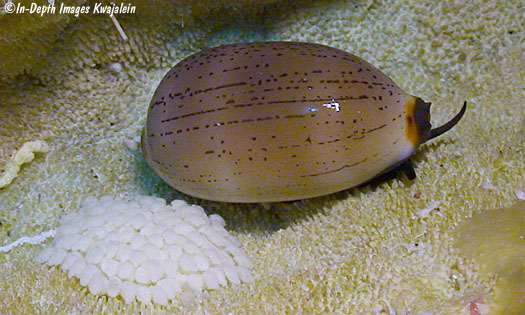
A closeup of the anterior end.
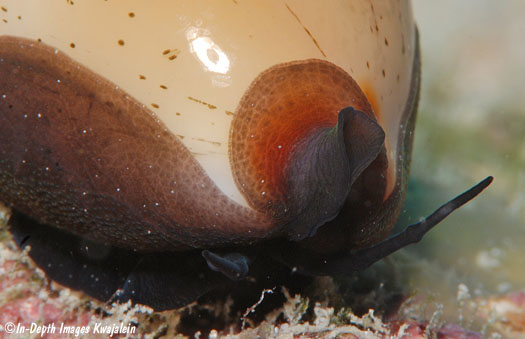
Light colored specimen with a very dark mantle.
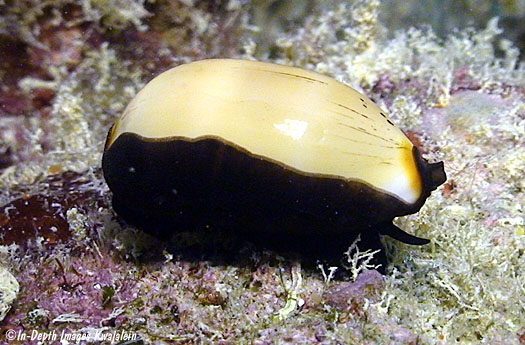
Here is a small juvenile Luria isabella still in the thin bulla stage.
Note that in this case the color pattern of the shell is present even in a young
juvenile.
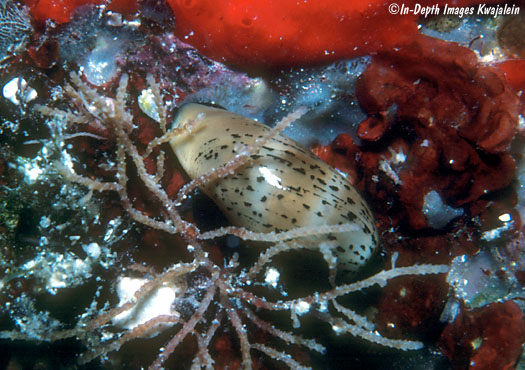
Another juvenile.
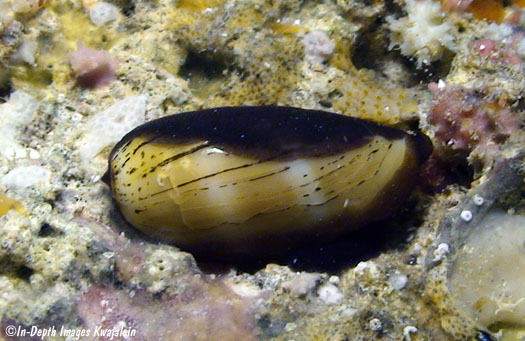
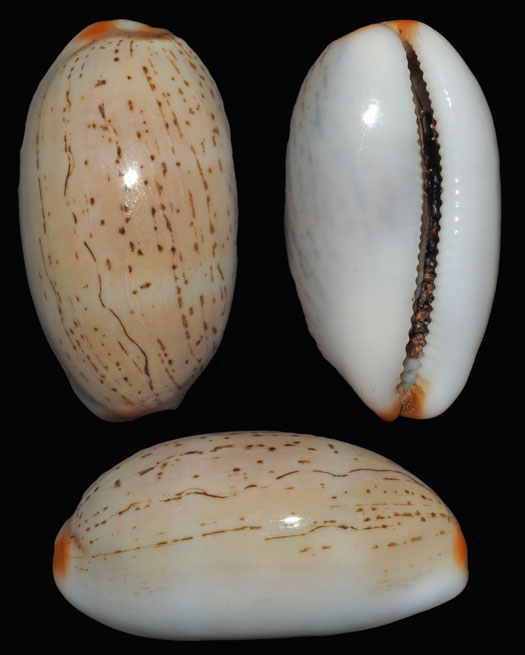
32.7mm, 1982
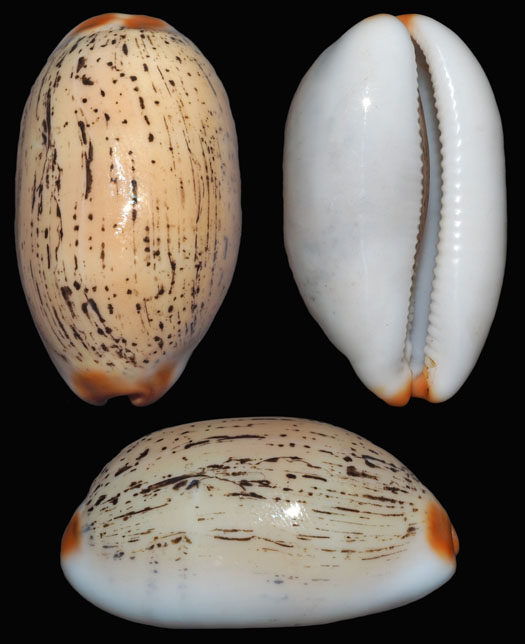
Smaller specimens with reduced
black streaks may be the form called Luria isabella f. gilvella.
14.0mm, 3 August 2002
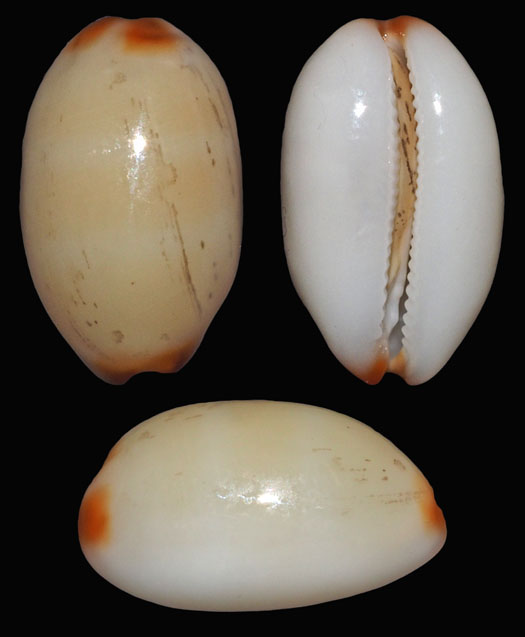
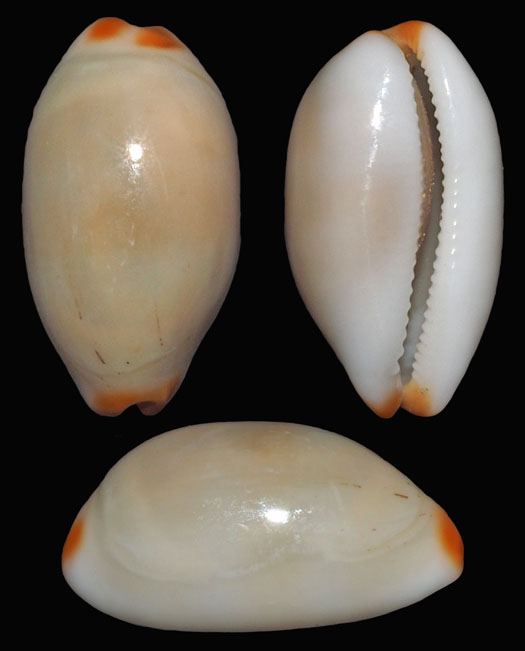
Created
1 April 2008
Updated 23 July 2020
Back to
cowries
Kwajalein Underwater Home




















